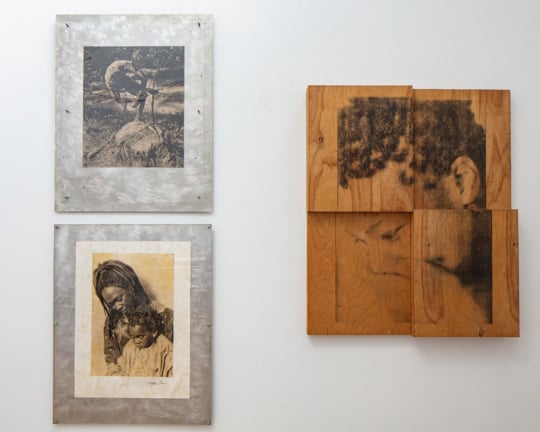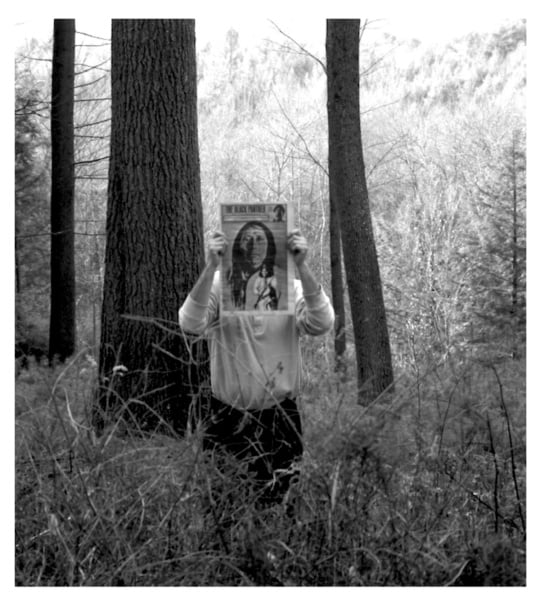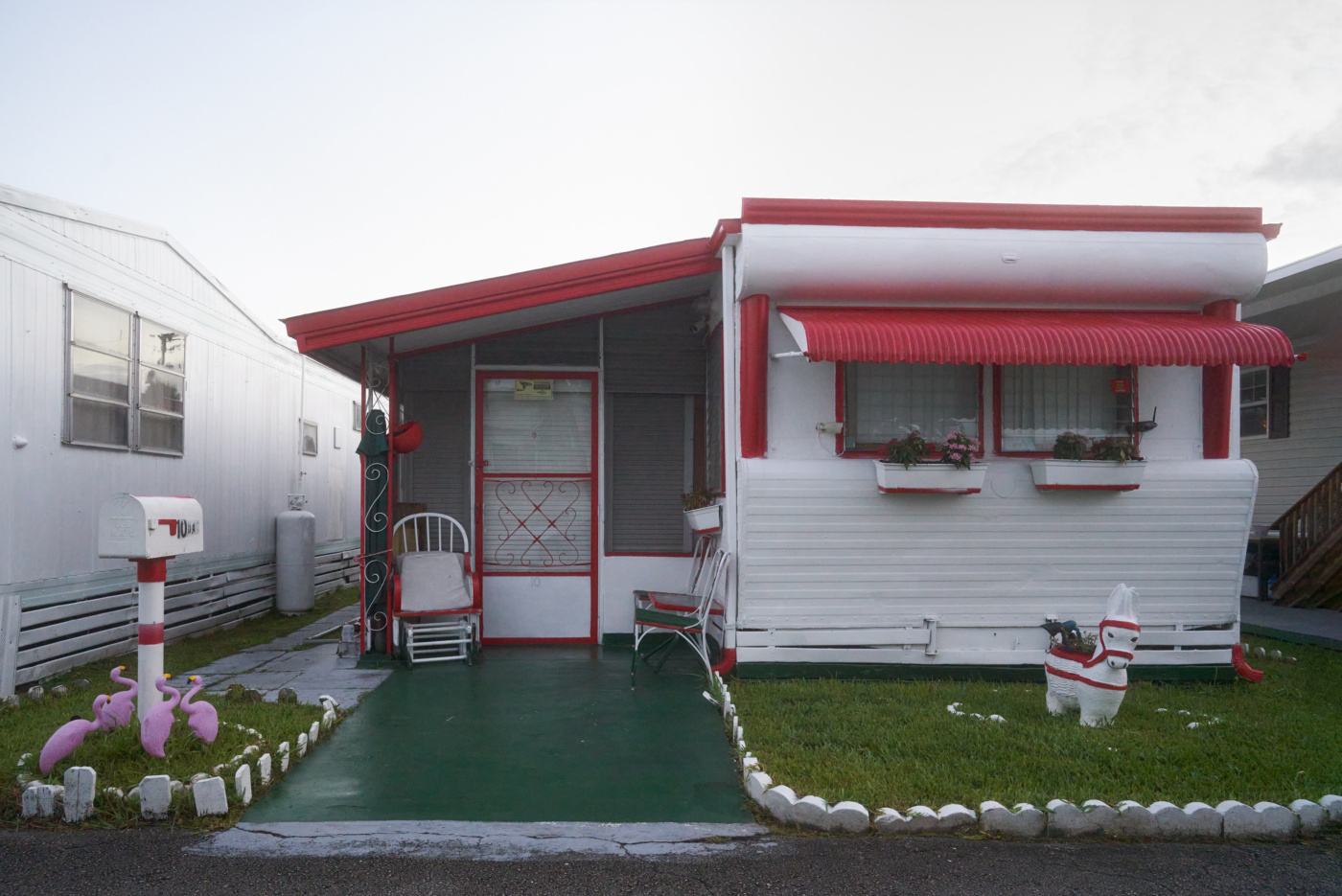
Though trailer hitches are visible, it’s clear that the homes documented in the exhibition Sunset Colonies at the Frost Art Museum in Miami have fully settled into the Florida ground. In the images, residents look at the camera with a question: What has brought you to my front porch? Diego Waisman began photographing mobile home communities when an older park near his home in Aventura was set to be demolished and he realized how little documentation existed of these supposedly transient places and their often long-term residents. The parks that Waisman photographs often hide in plain sight near more affluent areas. He’s careful to ask permission from those he photographs and learns about their stories. About a third of the photographs in the show include residents who stare directly at the lens, like the man framed by grids of lattice gesturing with a cigarette in Carlos (2019). In other portraits, like Flamingos 2 (2021), the careful landscaping and paired lawn chairs reveal details about the occupants without depicting them.
The new photographs are contrasted with archival clippings, which address historical narratives about these spaces. Mobile homes originally sold mostly to white families are now often marketed as a cheaper route to home ownership for recent immigrants, but these dwellings are classified as personal property, not real estate, exempting them from many of the legal protections for tenants of rented homes and apartments.1 One advertisement offers access to a club house with dances and bingo, while touting itself as a “full service full recreation adult community”. A news story from years later calls parks “crowded and unkempt”, showing how the narrative around these communities shifted over time and the Miami area rapidly developed in the second half of the twentieth century. Waisman’s work often focuses on communities that are facing eminent redevelopment, but in many cases pre-exist the surrounding neighborhoods that are now facilitating their resident’s displacement. Less than two miles away from the Florida International University campus where this show is mounted, the residents of L’il Abner Mobile Home Park in Sweetwater are publicly fighting sudden eviction notices that have displaced or will displace 3,000 people, or 15% of the suburb’s population, in order to build “affordable housing”.2 The park has been there since before the university began accepting students, and some residents have lived there for more than thirty years.3
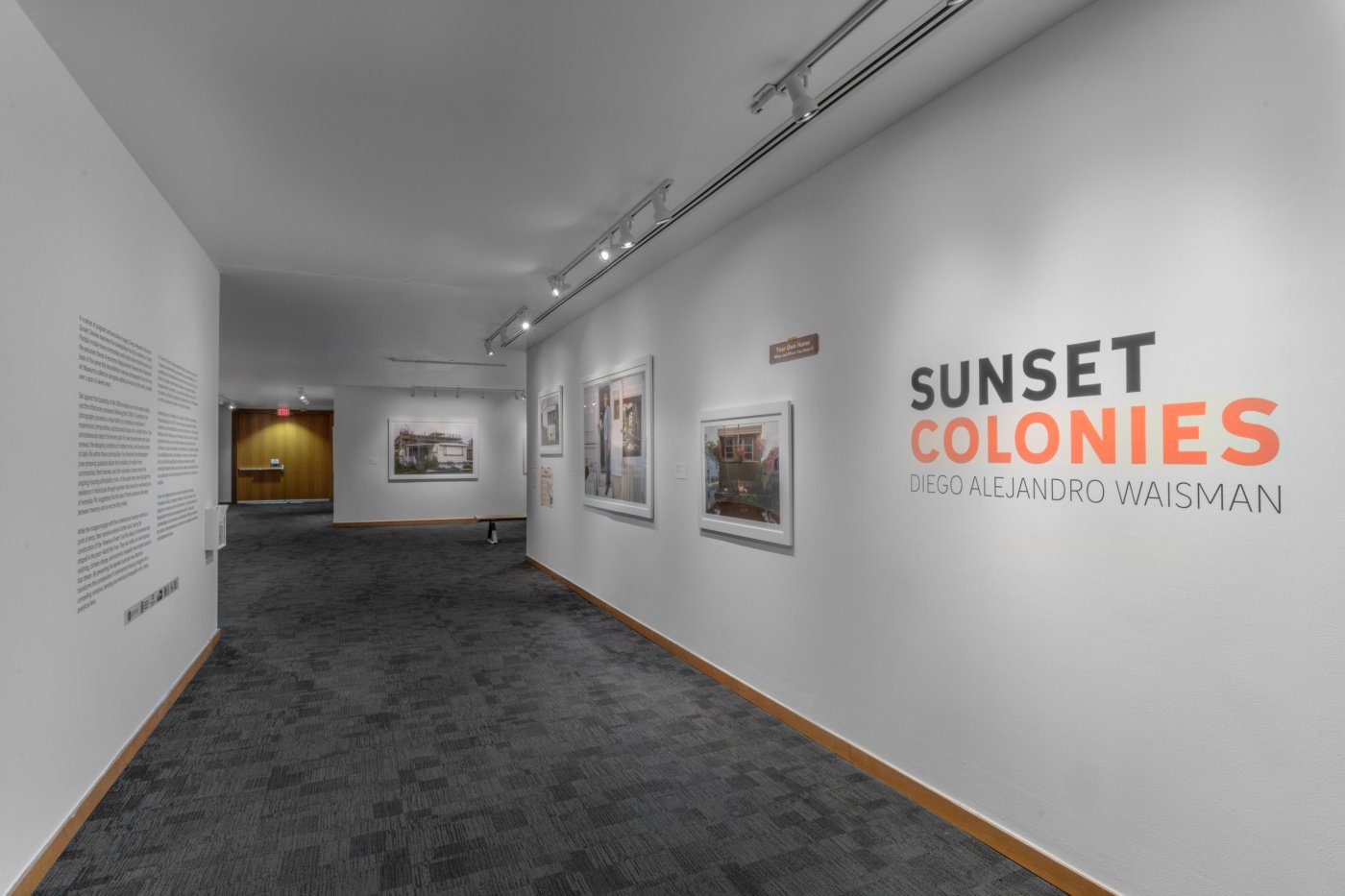
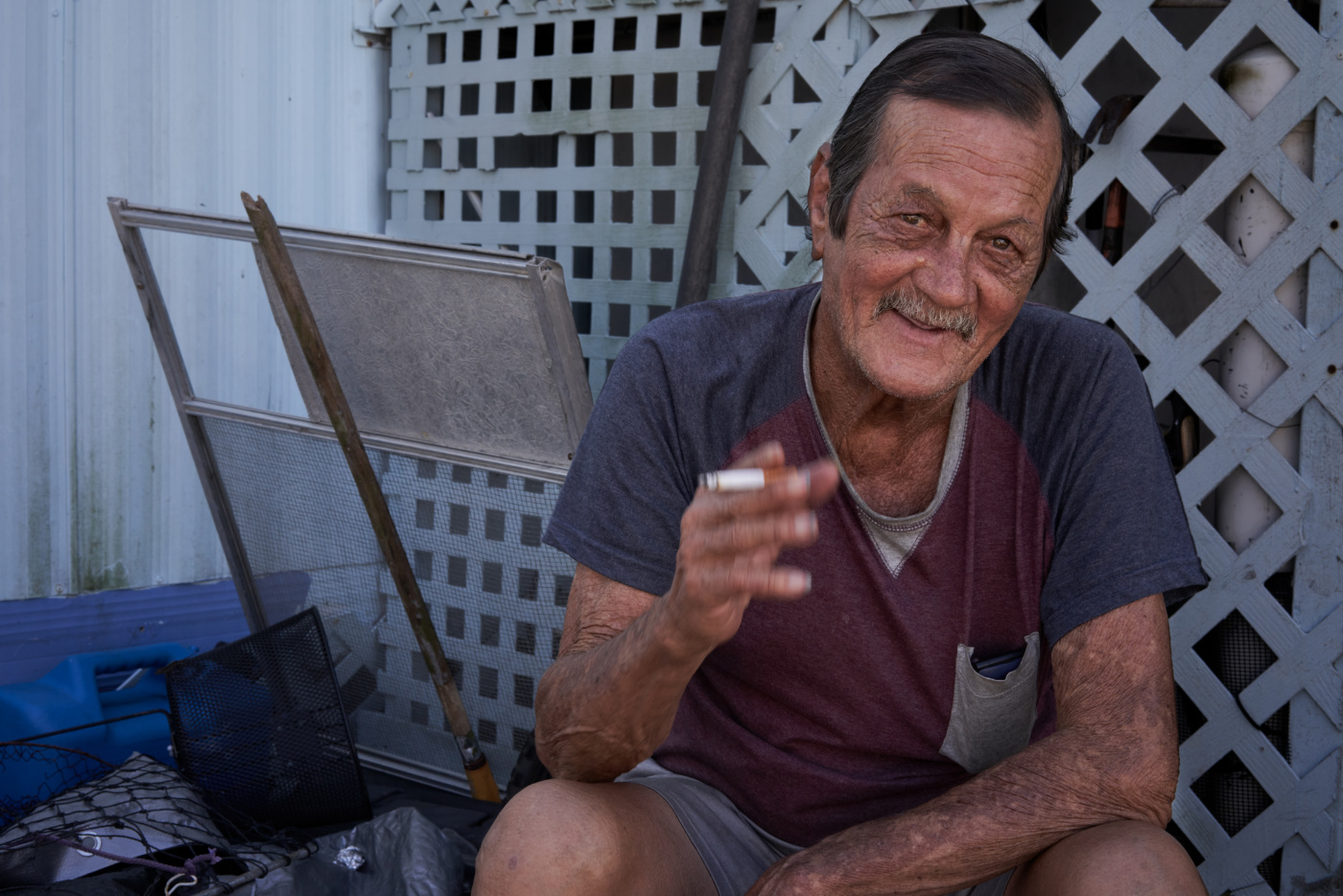
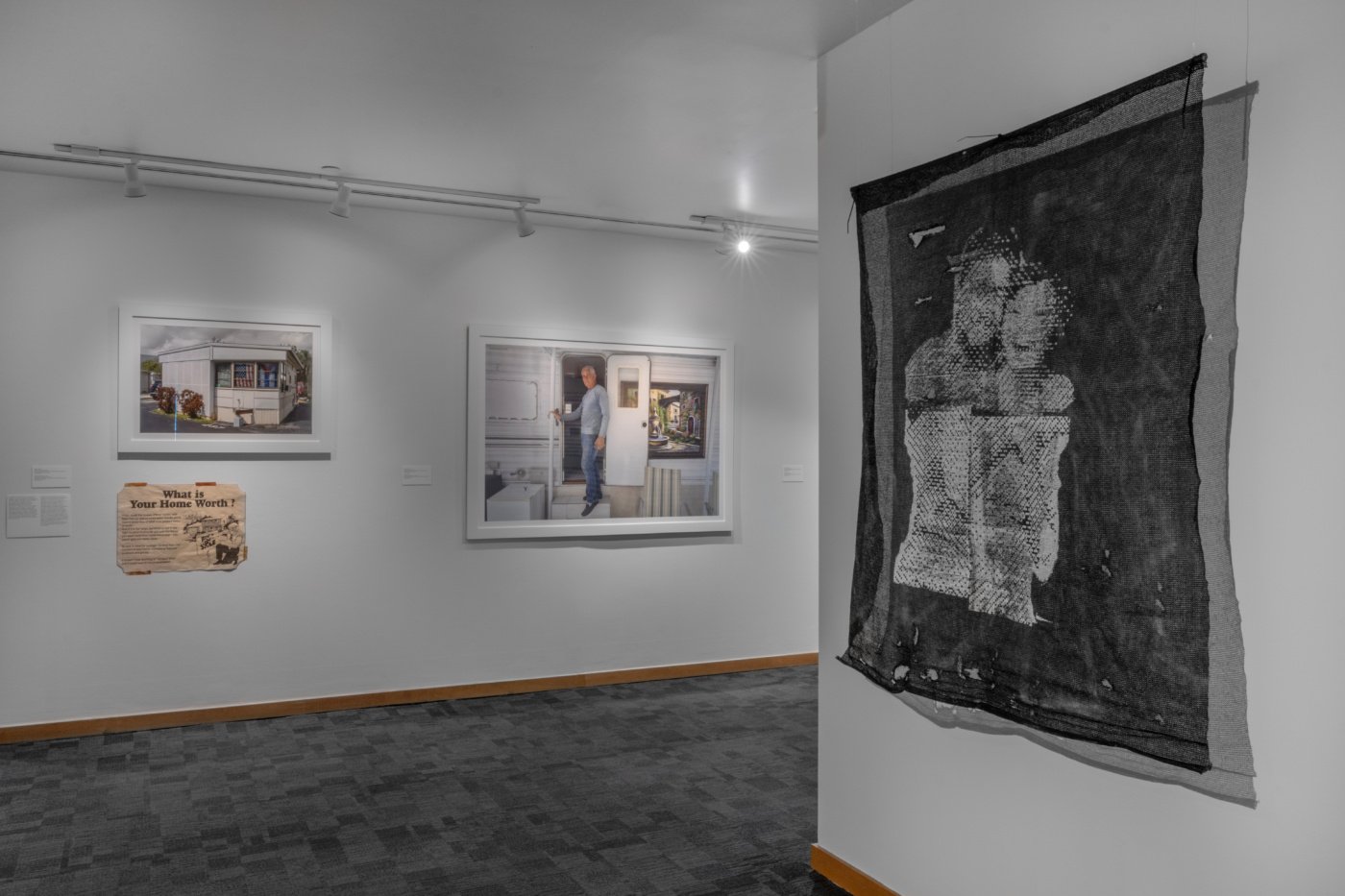
Waisman’s solo show and recent photobook share the name of a different mobile home community that was redeveloped into luxury housing in Broward County in 2019, and attempt to create a record of uniquely Floridian communities and homes that were the sites of decades of memories for many of their residents before they were quickly and unceremoniously demolished.4 The homes Waisman photographs began as standardized, factory produced models found in some of the archival advertisements reprinted on the walls, offering aspirational and misleading messages of homeownership. But the camera’s gaze lingers on the places where residents have lovingly customized their homes: brightly painted awnings and carefully tended flower boxes (Grow, 2021), pairs of pink flamingos greeting visitors on bent wires (Flamingos, 2021), a mass produced painting of an Italian street scene that becomes a portal when displayed on white siding (Felipe, 2022). Even when those who currently live in the photographed spaces are not pictured, there’s a sense of who they are and the way they fit into their neighborhood, as Waisman turns street scenes into still life portraits.
Several of the archival clips Waisman draws from allude to trailers as a shortcut to independence, and its difficult in some of the advertisements to tell the difference between a mobile home park and a suburban track home community. The lawns and green space for children and families offered a vision of the American dream, for prices only slightly cheaper than other homes. As fewer and fewer options outside of the rental system exist, these neighborhoods lose their autonomy in favor of more institutionalized spaces that may require application processes preventing those who have been incarcerated, recent immigrants, and others who can not qualify for subsidized assistance from finding community and a place to live. And as the state of Florida has increasingly criminalized homelessness over the last several years, leaving former residents on the margins even more vulnerable to criminalization, Waisman’s work asks important questions about who is being prioritized in the new developments that dot the skyline.5 Utilizing archival media and arresting portraits, Sunset Colonies is a poignant meditation on South Florida’s most ignored neighborhoods, and a record of a rapidly changing urban center that seems intent on disregarding its own history in pursuit of a mirage-like future as a “Magic City”.
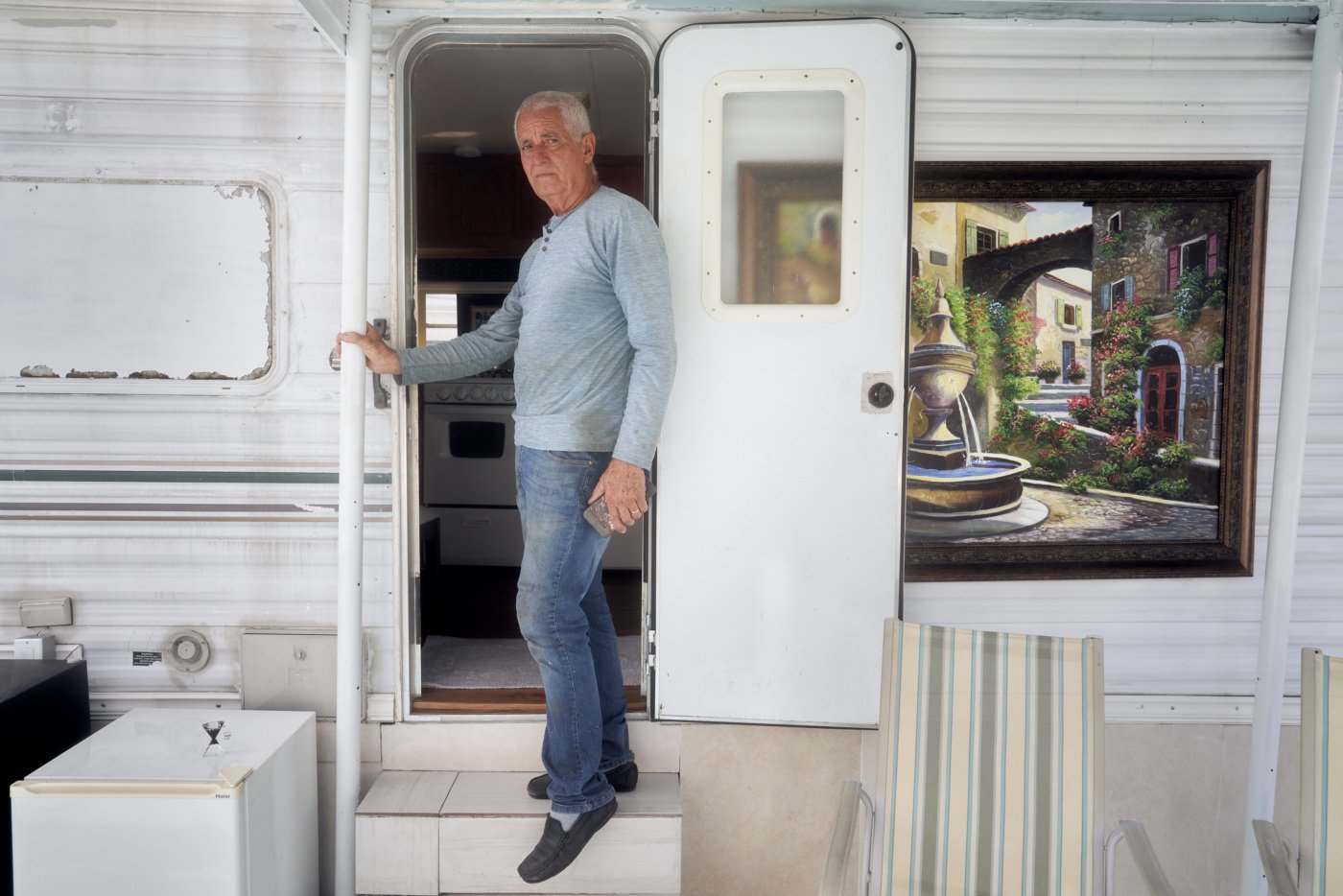
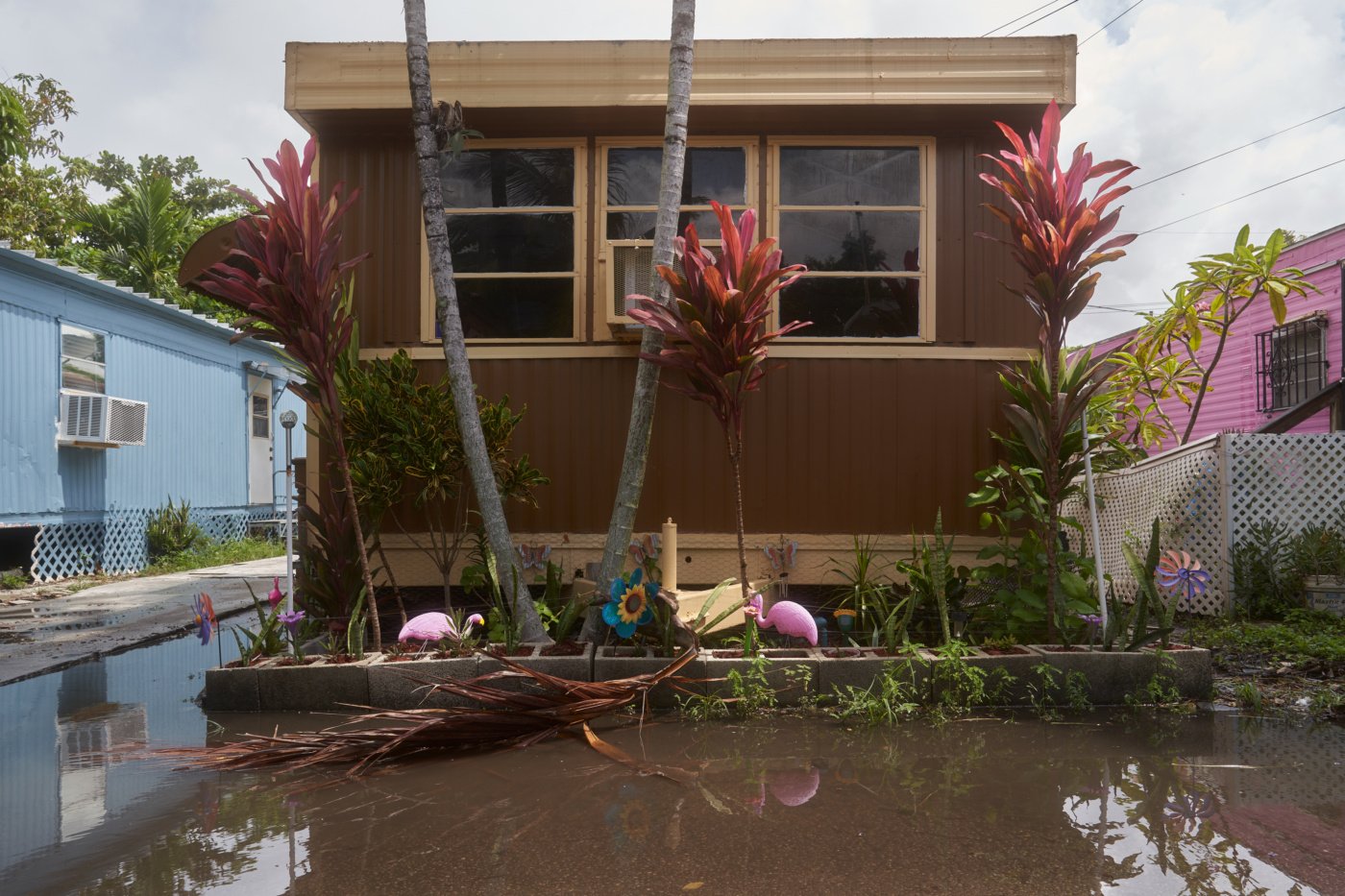
[1] Linares, Albinson. “Latino Mobile Home Park Residents Denounce Conditions, Allege Discrimination.” NBCNews.com, November 14, 2024. https://www.nbcnews.com/news/latino/latino-mobile-home-park-residents-denounce-conditions-allege-discrimin-rcna179313. ↩︎
[2] Klaver, Max. “‘A Zombie Movie’: Sweetwater Trailer Park Looted, Residents Afraid as Eviction Date Nears .” Miami Herald, March 24, 2025. https://www.miamiherald.com/news/local/community/miami-dade/article301567414.html#storylink=cpy. ↩︎
[3] L’il Abner’s Mobile Home Park and Sales, “Away We Go: We Are Celebrating Our Grand Opening” advertisement, The Miami Herald, Saturday, January 18, 1969, page 44; Martinez, Alexandra. “Mobile Home Community in Florida Is Organizing against Eviction.” Prism, January 22, 2025.
https://prismreports.org/2025/01/22/lil-abner-mobile-home-florida/. ↩︎
[4] Wallman, Brittany. “Luxury Housing Will Replace Trailer Park behind Broward Boulevard Walmart.” Sun Sentinel, December 12, 2018. https://www.sun-sentinel.com/2018/11/21/luxury-housing-will-replace-trailer-park-behind-broward-boulevard-walmart/. ↩︎
[5] Martinez, Alexandra. “Mobile Home Community in Florida Is Organizing against Eviction.” Prism, January 22, https://prismreports.org/2025/01/22/lil-abner-mobile-home-florida/. ↩︎

